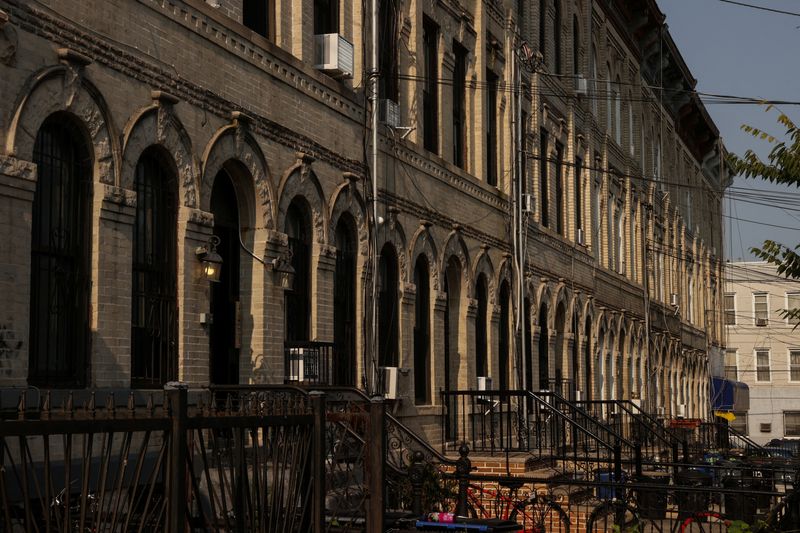
© Reuters. FILE PHOTO: A row of residential houses stands in Brooklyn’s neighborhood of Bushwick, New York, U.S., September 16, 2022. REUTERS/Amr Alfiky
By Howard Schneider
WASHINGTON (Reuters) – Federal Reserve officials for months have been counting on slower-rising U.S. housing prices to help in their efforts to control inflation, and there are good reasons to think that may happen soon.
An oft-cited index of real-time leases prepared by real estate firm Zillow, for example, shows rental inflation peaked just over a year ago – and, mathematically, should start lowering inflation statistics that include rents as an annual average. Data showing the rental vacancy rate was the highest in two years in the first quarter of 2023 also supports the idea that rental inflation should start to come down.
But that relief remains, for now, just over the horizon, with shelter costs in May continuing to drive headline inflation and rising at a monthly rate that equates to about 6% annually – a lot for a service that accounts for about 35% of the consumer “basket” used to analyze prices.
Though the monthly pace of shelter inflation is slowing, it is doing so just as some analysts – and some Fed officials – ponder if housing has reached a bottom and whether home prices might start to rise again.
Housing is treated as a service in the Consumer Price Index, broken into rents and a rental equivalent calculated for those who own their homes. Both were increasing at around 0.8 percent per month last fall and have since declined to around a 0.5% growth pace as of May.
But that has still been enough to prop up overall inflation. Shelter costs in May accounted for roughly two-thirds of the headline 4% increase in consumer prices.
Though further slowing is expected, “shelter inflation remains a wildcard … in the near term,” analysts from TD Securities wrote following the release on Tuesday of the latest CPI data, with month-to-month readings that may not move down much further for the time being.
Ahead of this week’s Fed policy meeting, some U.S. central bank officials had already begun raising doubts about whether the full measure of help expected from a slowdown in housing costs will be realized.
“While we expect lower rents will eventually be reflected in inflation data as new leases make their way into the calculations, the residential real estate market appears to be rebounding, with home prices leveling out recently, which has implications for our fight to lower inflation,” Fed Governor Michelle Bowman said in a speech late last month.
Source: Investing.com




























